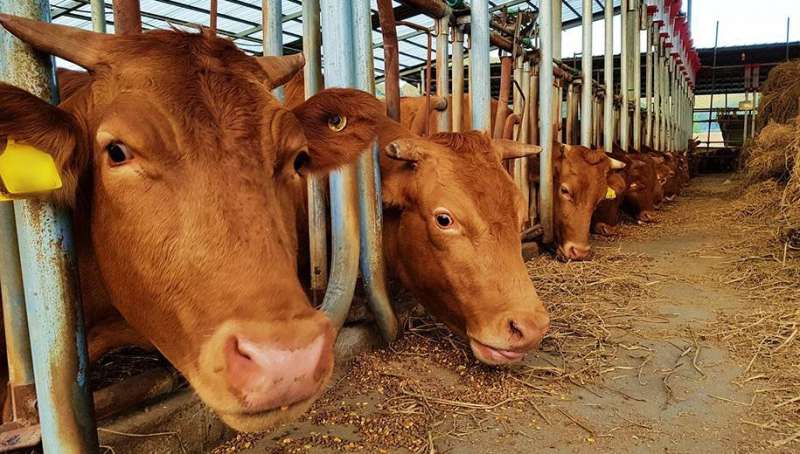Raising livestock: An answer to crop residue burning

Livestock can help Nepal address crop residue burning, which has health and environmental impacts.
Raising livestock can significantly help Nepali farmers avoid burning crop residues—a practice known to generate atmospheric pollutants that increase warming, and severely impact health, says a new study.
Published this month in the journal Environmental Pollution, the study combined bottom-up estimates from the field and satellite imagery to develop an emission inventory attributable to crop residue burning for every square kilometer of Nepal, extending across the high Himalayas and into the 'terai' (lowland) plains, bordering India.
"Crop residue… is burned in developing countries… to cheaply eliminate post-harvest residues," says Bhupendra Das, lead study author and researcher at the Tribhuvan University, Kathmandu. "However, the inefficient open burning generates significant amounts of pollutants such as aerosols (particulate matter, black carbon, organic carbon), trace gases (nitrogen oxides, carbon monoxide, non-methane volatile organic compounds, ammonia, sulfur dioxide), and greenhouse gases (carbon dioxide, methane, nitrous oxide)."
Significantly, the study also found that open burning of crop residue is less likely to occur where farmers have more livestock per hectare. "So, raising livestock by local farmers, which provides additional incomes, could be an important mitigation measure to reduce open burning," says Das, who is also a researcher at the Institute for Advanced Sustainability Studies, Potsdam, Germany.
Raising livestock will provide an opportunity for farmers in alternative energy production such as biogas, explains Das to SciDev.Net, pointing to Nepal's existing commercial biogas plants at Nawalparasi and at Biratnagar.
"These plants produce piped or bottled, clean energy cooking gas as a substitute to imported liquid petroleum gas, which is expensive in a resource-poor and landlocked country like Nepal."
According to Das, cattle dung if left lying around generates methane. which is a worse greenhouse gas than carbon dioxide. On the other hand, cattle dung is ideal feedstock for biogas plants which produce methane that can be tapped for commercial or domestic use. "Nepal needs to invest in more biogas plants to save on imports and reduce dependency on fossil fuels."
Analysis of temporal distribution from satellite data showed that around 54 percent of total emissions occurred in the month of April and dropped to zero during July to September. "This is valuable for policy makers and other involved in air quality management," says Das.
A 2018 study led by Das had already shown the global warming potential of pollutants such as CO2, CH4, N2O and black carbon generated by the burning municipal solid waste in Nepal for its negative health impacts.
Black carbon, a major pollutant from open burning is known to have a high impact on glacier melt in the vast Hindu Kush-Himalaya ice sheet, according to the Intergovernmental Panel on Climate Change's Special Report on the Ocean and Cryosphere in a Changing Climate, released in 2019.
"Black carbon can also disrupt the photosynthesis process in plants, reducing agricultural productivity, though this is a subject for further research," adds Das.
Studies have shown that combine harvesters can be modified to collect crop residue to be turned into animal feed, for alternative energy production and as raw materials for such industries as mushroom cultivation, paper production and fuel in brick kilns.
"Air pollution is a serious issue in South Asia," says Ajay Singh Nagpure, head of Air Quality and Sustainable Urbanization program at the World Resources Institute—India. "For better policy formulation and mitigating air pollution impacts, understanding the different sources and their contribution is essential."
"Since agriculture burning is a major source of air pollution in South Asia and there is limited data available from this source, the recently published study led by Bhupendra Das to produce a high-resolution emissions inventory for crop residue open burning in the context of Nepal is critical," says Nagpure.
More information: Bhupendra Das et al. A model-ready emission inventory for crop residue open burning in the context of Nepal, Environmental Pollution (2020). DOI: 10.1016/j.envpol.2020.115069
Journal information: Environmental Pollution
Provided by SciDev.Net


















